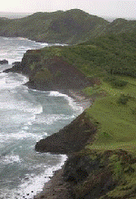
From the bow of the outrigger boat I watched the waves crash against the rocky shore. It was in the middle of the rainy season and several waterfalls slash across the cliffs of the western coast of Palaui Island. I could not believe it but I counted a total of 24. The island is a watershed. Rain water that falls on its forest ends up absorbed by the soil or taken in by creeks, streams and rivers, then eventually drains out to the sea.
The island is part of barangay San Vicente, Sta. Ana, Cagayan. It is located 642 km. north of Metro Manila. It is also part of the Cagayan Special Economic Zone and Freeport that is being managed by the Cagayan Economic Zone Authority or CEZA. In August 16, 1994, the entire 7,415 hectare island was declared a Marine Reserve under the category of Protected Landscape and Seascape. Like all protected areas in the country, the island is managed by the Protected Area Management Board, a multi-sectoral group that decides on the sustainable use of its resources. Palaui Island had been identified as a priority site for tourism development. It is a place that will soon become a hub for a special brand of tourism that focuses on outdoor education. The natural ecosystems of the island provide a perfect venue for several outdoor activities that will teach people the value of resource conservation and protection.
CEZA Administrator Jose Mari Ponce said that Palaui was chosen as the priority site because tourism not only has the potential to provide economic benefit but also serves as a tool for conservation. He added, “ CEZA promotes sustainable tourism so that we make sure that Palaui Island and all other tourist sites within the zone remain destinations for generations.”
Indeed, the landscape and seascape of the island are stunningly beautiful and well preserved that they need to remain such for many years. Tourism can be beneficial but it can also destroy. Irresponsible tourism result to vandalism, garbage problem, collection of plants and animals for souvenirs and cultural erosion. Louie Mencias, tourism consultant of CEZA said, “ Palaui Island is envisioned to be a place where tourists will learn to value natural ecosystems. By participating in outdoor activities such as hiking, kayaking, snorkeling, boat tours and community immersions, they will learn to be responsible travelers. They will behave in a manner that will contribute to the preservation of the place that they visit.”
When my boat reached the northern most tip of the island, a structure peaks from atop a hill. It is a light house that was built in 1888. Faro de Cabo Engaño stands at 92.75 meters above sea level and provides an excellent view of the forest, the nearby Dos Hermanos Island, as well as the Pacific and Babuyan Channel. This landmark provides a historical and cultural element to the island’s interpretative program. It is a place where one can see both the sunrise and the sunset unobstructed.

As I view the light house from the boat I could not help but think of the hardship that the workers must have gone through when they were building it. It was said that 78 people died during its construction due to illness brought about by the harsh condition of the island back then. Today, Sta. Ana is accessible by land and has hotels, pension houses, resorts, restaurants and private houses for authentic homestay experience. Local transport sector that include van, tricycle and boat operators are well organized and provide mobility. Boats bring tourists from Port San Vicente to Punta Verde, Siwangag and Cape Engaño while island guides accompany visitors along hiking trails.
Climbing up to the light house was quite a feat but was worth all the effort. The panoramic view as well as the interesting landscape and vegetation provide more than adequate reward. Wild carabaos, horses and birds are just some of the interesting faunal species of the place. They are often spotted grazing on the grasslands and open spaces, often running off into the forest when disturbed.
 As I traverse the trail from Cape Engaño in the north to Punta Verde in the south, I was enthralled by the rich biodiversity of the forest. Several streams criss-cross and drop in mini-waterfalls. Vines, orchids, lichens, berries, diptherocarp trees, palms, ferns and other flowering and fruit bearing plants thrive in profusion. The thick forest canopy provided a natural umbrella for me and for the many life forms that live on the forest floor. When the rain stopped, shafts of light beamed through the leaves like lasers, creating a surreal atmosphere. Specks of sunlight danced among plants of various forms, colors and textures. A resource inventory recently conducted by Conservation International and the University of the Philippines Institute of Biology reveals species that are globally threatened and near threatened. Scientists who have visited the island all agree that biodiversity of both the terrestrial and marine ecosystems is high.
As I traverse the trail from Cape Engaño in the north to Punta Verde in the south, I was enthralled by the rich biodiversity of the forest. Several streams criss-cross and drop in mini-waterfalls. Vines, orchids, lichens, berries, diptherocarp trees, palms, ferns and other flowering and fruit bearing plants thrive in profusion. The thick forest canopy provided a natural umbrella for me and for the many life forms that live on the forest floor. When the rain stopped, shafts of light beamed through the leaves like lasers, creating a surreal atmosphere. Specks of sunlight danced among plants of various forms, colors and textures. A resource inventory recently conducted by Conservation International and the University of the Philippines Institute of Biology reveals species that are globally threatened and near threatened. Scientists who have visited the island all agree that biodiversity of both the terrestrial and marine ecosystems is high.Palaui island in endowed with primary and secondary forests, mangrove areas, seagrass meadows, tidal pools and coral reefs. It has the potential for several outdoor sports that are also tools for exploration. The reefs around the island are excellent for snorkeling and SCUBA diving. The forest trails which are being prepared for nature interpretation are excellent for educational hikes, and camping. The tidal pools, mangrove forests and shallow reefs areas are ideal for coastal environmental exposure programs.

Local residents envision the island to remain intact even if the mainland becomes urbanized. 108 families living on the island serve as stewards. Their lives are entrenched and connected to the natural environment. Tourism is a non-extractive industry and relies on the integrity of the destination for its sustainability. Active participation in the promotion of a community-based tourism industry will not only result to economic and social benefits but will also provide justification for the protection of the place.
After hiking through the woods for more than five hours, I emerge in the midst of the community fully aware that this island paradise will one day serve as a place where visitors will learn values pertaining to the care for nature, appreciation of history and respect for culture. The smiles and warm reception from the people reflect hope, sense of pride, passion and a positive outlook for the future.




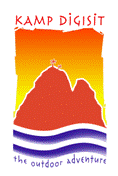
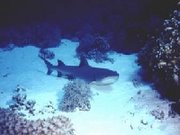

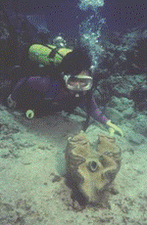
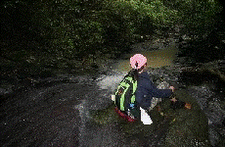
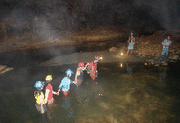
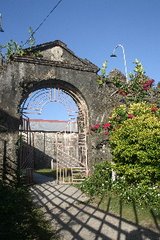
No comments:
Post a Comment